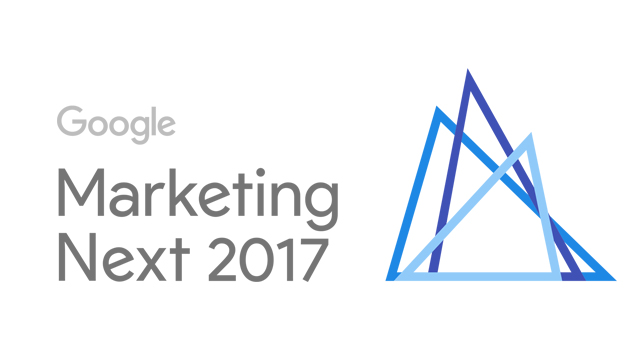Takeaways from Google Marketing Next 2017.
By Marisa Giannini, Associate Search Director
During the May 23 live stream of the Google Marketing Next keynote, a number of new features, innovations and platform integrations were announced to help marketers address challenges they face and to explore new ways of doing business. Google emphasized throughout the keynote that these new features and innovations were designed as mechanisms to help advertisers work smarter and more efficiently. Here are the major themes and new features to leverage:
AUDIENCE: Better, New & Broader Reach
- Google is improving the quality of audience segments by connecting data across Google, across devices and in real-time in order to tell a single, seamless story across all the Google properties. This also offers a powerful new way to reach users who already have an interest in your brand. The addition of video viewer audience lists in search will allow advertisers to target users who have watched your YouTube videos and interacted with your channel.
- Consumer patterns and life event targeting on YouTube are some of the new audience segments from Google. These segments will allow advertisers to target consumers who have recently experienced major life changes such as graduating, moving or getting married.
- An extension of Google’s existing Display & YouTube targeting capabilities, in-market audiences are now coming to Search. This new targeting will allow advertisers to broaden their reach by finding relevant consumers whose past search activity and website browsing indicates they align with your brand.
MEASUREMENT & ATTRIBUTION: Is my marketing working?
- Google announced the launch of Google Attribution to help marketers measure the impact of each marketing touch point across multiple devices and channels in one place, as well as encourage marketers to move away from last-click attribution. This new tool will make it easy to take action by providing a single view utilizing data from multiple tools advertisers are already using, including AdWords, Google Analytics and DoubleClick Search. An enterprise version called Attribution 360 will also be available as a solution for larger advertisers.
- With the number of screens that people use increasing, advertisers are finding it more difficult to measure reach and frequency. In response to this issue, Google introduced Unique Reach Reporting for AdWords and DoubleClick. This metric will allow advertisers to measure how many people were shown your display and video ads (inclusive of YouTube), unique users and average impressions per unique users. The data is de-duplicated across devices, campaigns and formats to allow you to identify wasted money that can be spent elsewhere.
IN-LINE ASSISTANCE: No line between channels, the customer is the channel
- With Google Ads significantly influencing which stores users choose to go to, Google announced two new tools to help advertisers measure store sales accurately and completely. The first tool will allow the import of transaction data into AdWords and tie it back to specific search or shopping campaigns, as well as devices. The second tool gives advertisers the opportunity to take advantage of Google’s third party partnerships to get store sales data with no implementation on the advertisers end. Both solutions match transactions back to Google ads.
- Before visiting a store, over 50% of internet users look for videos related to a product or service. In response to these consumer behaviors, Google has announced that Store Visits data and Location Extensions are coming to YouTube TrueView ads. These features will allow advertisers to showcase local information alongside video ads to help consumers find directions, check business hours and more. In return, advertisers will be able to measure the impact to their in-store foot traffic.
The new features and integrations that Google introduced offer advertisers tools to work more efficiently. With better targeting capabilities available, insight to the touch points involved in a conversion that can help inform bidding decisions and lastly, a link between online and off line data, advertisers should look to test the offerings that align with their goals. Marketers can already begin leveraging some of these capabilities today, while others are still in beta and require reaching out to you Google Account Manager for whitelisting. Additional announcements from Google can be found by watching the full 2017 Google Marketing Next keynote.
More Insights
- May 31, 2017 The Digiday Programmatic Summit 2017.
- May 23, 2017 Snapchat evolves amid heat from Q1 earnings report.
- April 13, 2017 The rollback of FCC broadband privacy rules.
